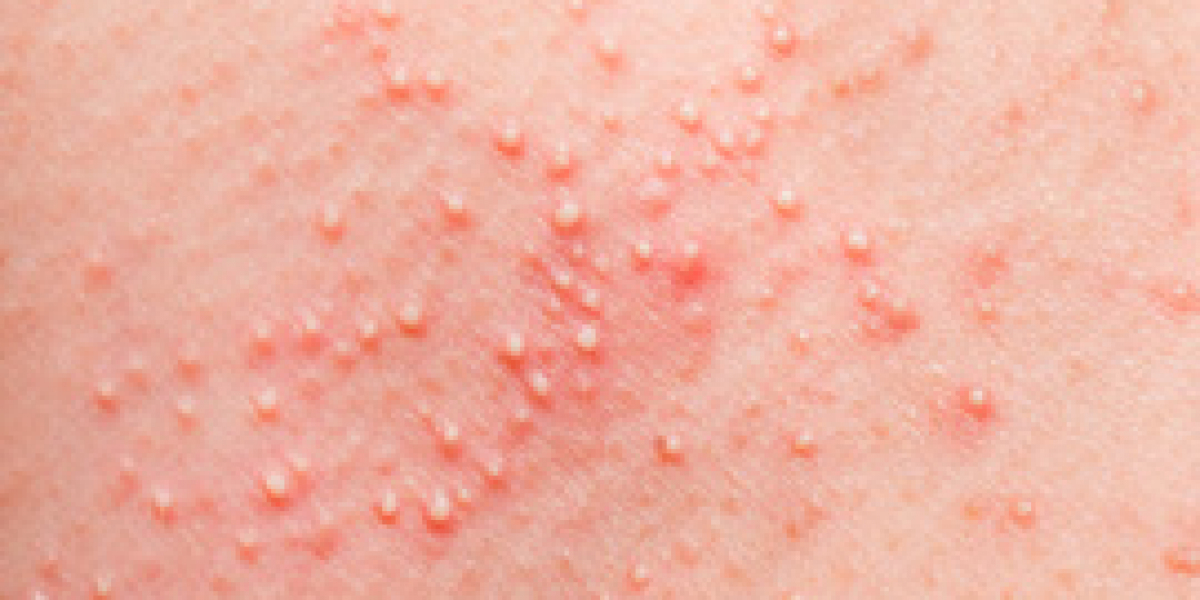Heat rash, also known as prickly heat or miliaria, is a common skin condition that occurs when sweat gets trapped in the skin's pores, leading to irritation and inflammation. It is particularly prevalent in hot, humid climates or during intense physical activity, where excessive sweating can overwhelm the body’s ability to cool itself. Understanding what heat rash looks like and feels like is crucial for identifying it, managing symptoms, and seeking appropriate treatment.
What Heat Rash Looks Like
Heat rash manifests in different forms depending on its severity and the depth of sweat gland blockage. The condition is generally categorized into three types: miliaria crystallina, miliaria rubra, and miliaria profunda. Each type has distinct visual characteristics:
Miliaria Crystallina: This is the mildest form of heat rash and occurs when sweat is trapped in the outermost layer of the skin (epidermis). It appears as tiny, clear, fluid-filled blisters or bumps that resemble water droplets on the skin. These bumps are usually not itchy or painful and may break easily with friction. Miliaria crystallina is common in newborns but can also affect adults in hot conditions.
Miliaria Rubra: Known as prickly heat, this is the most common type of heat rash. It occurs when sweat ducts are blocked deeper in the epidermis, leading to inflammation. The rash appears as small, red, inflamed bumps or papules that may be itchy or prickly. These bumps can cluster together, giving the skin a blotchy, red appearance. Miliaria rubra often affects areas prone to friction, such as the neck, armpits, groin, or under the breasts.
Miliaria Profunda: This is a rarer and more severe form of heat rash that occurs when sweat leaks into the deeper layers of the skin (dermis). It presents as larger, flesh-colored, or reddish lumps that are firm to the touch. Miliaria profunda is less itchy but can cause a burning sensation and may lead to heat exhaustion if widespread, as it impairs the body’s ability to sweat effectively.
Heat rash typically appears in areas where sweat is likely to accumulate, such as skin folds, areas covered by tight clothing, or regions exposed to prolonged heat. The rash may look like clusters of tiny pimples, blisters, or red patches, and its appearance can vary depending on skin tone. On lighter skin, the redness is more pronounced, while on darker skin, the rash may appear as darker or hyperpigmented bumps.
What Heat Rash Feels Like
The sensation of heat rash is often its most noticeable feature, particularly with miliaria rubra. The term “prickly heat” aptly describes the feeling, as the rash can cause:
Itching: The affected area may itch intensely, especially in miliaria rubra, where inflammation irritates nerve endings in the skin. Scratching can worsen the rash and increase the risk of secondary infections.
Prickling or Stinging: Many people describe a “pins and needles” sensation, especially when the skin is exposed to heat, sweat, or friction. This prickling can be uncomfortable and may intensify with movement or tight clothing.
Burning: In more severe cases, particularly with miliaria profunda, the skin may feel warm or burning due to deeper inflammation. This sensation can be distressing and may be accompanied by a feeling of skin tightness.
Tenderness: The affected areas may be sensitive to touch, especially if the rash is widespread or if blisters have burst. In some cases, the skin may feel raw or irritated.
The discomfort of heat rash can range from mild to debilitating, depending on its severity and the individual’s sensitivity. For some, the itching and stinging can interfere with daily activities, sleep, or exercise, particularly in hot weather. If the rash becomes infected due to scratching or bacterial growth, symptoms may escalate to include pain, swelling, or pus-filled bumps.
Causes and Risk Factors
Heat rash occurs when sweat ducts become blocked, trapping sweat beneath the skin. Several factors contribute to this condition:
Hot and Humid Weather: High temperatures and humidity increase sweating, which can overwhelm the sweat glands and lead to blockages.
Tight or Non-Breathable Clothing: Clothing that traps heat and moisture, such as synthetic fabrics, can exacerbate heat rash.
Physical Activity: Intense exercise or prolonged exposure to heat can trigger excessive sweating, increasing the likelihood of heat rash.
Skin Occlusion: Lotions, creams, or bandages that clog pores can contribute to sweat duct blockages.
Immature Sweat Glands: Newborns are particularly susceptible to heat rash because their sweat glands are not fully developed.
Individuals living in tropical climates, those who engage in strenuous physical activity, or those with conditions that cause excessive sweating (hyperhidrosis) are at higher risk. Additionally, people using certain medications or products that affect skin permeability may be more prone to heat rash.
Managing Heat Rash
Most cases of heat rash resolve on their own within a few days if the skin is kept cool and dry. Here are some effective management strategies:
Cool the Skin: Move to a cooler, air-conditioned environment or use fans to reduce sweating. Cool showers or compresses can soothe the skin.
Wear Loose, Breathable Clothing: Opt for lightweight, cotton-based clothing that allows air circulation and reduces friction.
Avoid Irritants: Refrain from using heavy creams, ointments, or lotions that can clog pores. Choose non-comedogenic products if moisturizing is necessary.
Keep Skin Dry: Gently pat the skin dry after sweating or bathing, and avoid rubbing, which can worsen irritation.
Over-the-Counter Remedies: Calamine lotion or hydrocortisone cream (1%) can reduce itching and inflammation. Antihistamines may help with severe itching.
If heat rash becomes infected, as evidenced by increased redness, swelling, warmth, or pus, medical attention may be required. Bacterial infections, often caused by Staphylococcus or Streptococcus, can complicate heat rash, particularly if scratching breaks the skin.
In such cases, a healthcare provider may prescribe antibiotics like cephalexin capsules, which are widely available through pharmaceutical distributors. Cephalexin, a first-generation cephalosporin, is effective against common skin bacteria and is commonly used to treat secondary infections. Distributors of cephalexin capsules ensure its availability in pharmacies and hospitals, making it accessible for prescribed treatments.
Preventing Heat Rash
Prevention is key to avoiding heat rash, especially for those in high-risk environments. Tips include:
- Staying in cool, well-ventilated areas during hot weather.
- Wearing loose, breathable fabrics like cotton or moisture-wicking materials.
- Taking frequent breaks during physical activity to cool down and dry off.
- Avoiding heavy skincare products that can clog pores.
- Staying hydrated to support the body’s natural cooling mechanisms.
When to Seek Medical Attention
While heat rash is usually benign, certain symptoms warrant professional evaluation:
- Persistent or worsening rash despite home treatment.
- Signs of infection, such as fever, swelling, or pus.
- Severe discomfort that interferes with daily life.
- Symptoms of heat exhaustion, such as dizziness, nausea, or rapid heartbeat.
A healthcare provider may recommend topical or oral treatments, including antibiotics like cephalexin capsules, distributed by reputable pharmaceutical companies, to address complications. Always follow a doctor’s guidance when using prescription medications.
Conclusion
Heat rash is a common but manageable condition characterized by distinct visual and sensory symptoms. It appears as clear blisters, red bumps, or firm lumps, depending on its type, and feels itchy, prickly, or burning. By understanding its causes and taking preventive measures, individuals can minimize discomfort and complications. For cases requiring medical intervention, treatments like cephalexin capsules, available through trusted distributors, can address secondary infections effectively. Staying cool, dry, and mindful of skin health is essential for preventing and managing heat rash in hot, humid conditions.














